Marinated Spiced Pork Loin (Medieval Recipe)

Get ready to transform your dinner game with this show-stopping marinated spiced pork loin that’ll have everyone asking for seconds.

This isn’t just another pork recipe – it’s a flavor explosion that combines the perfect balance of sweet honey, tangy soy sauce, and fiery hot sauce in one incredible marinade.

The magic happens when those bold spices and aromatics penetrate deep into the tender pork, creating layers of complex flavor that’ll make your taste buds dance.
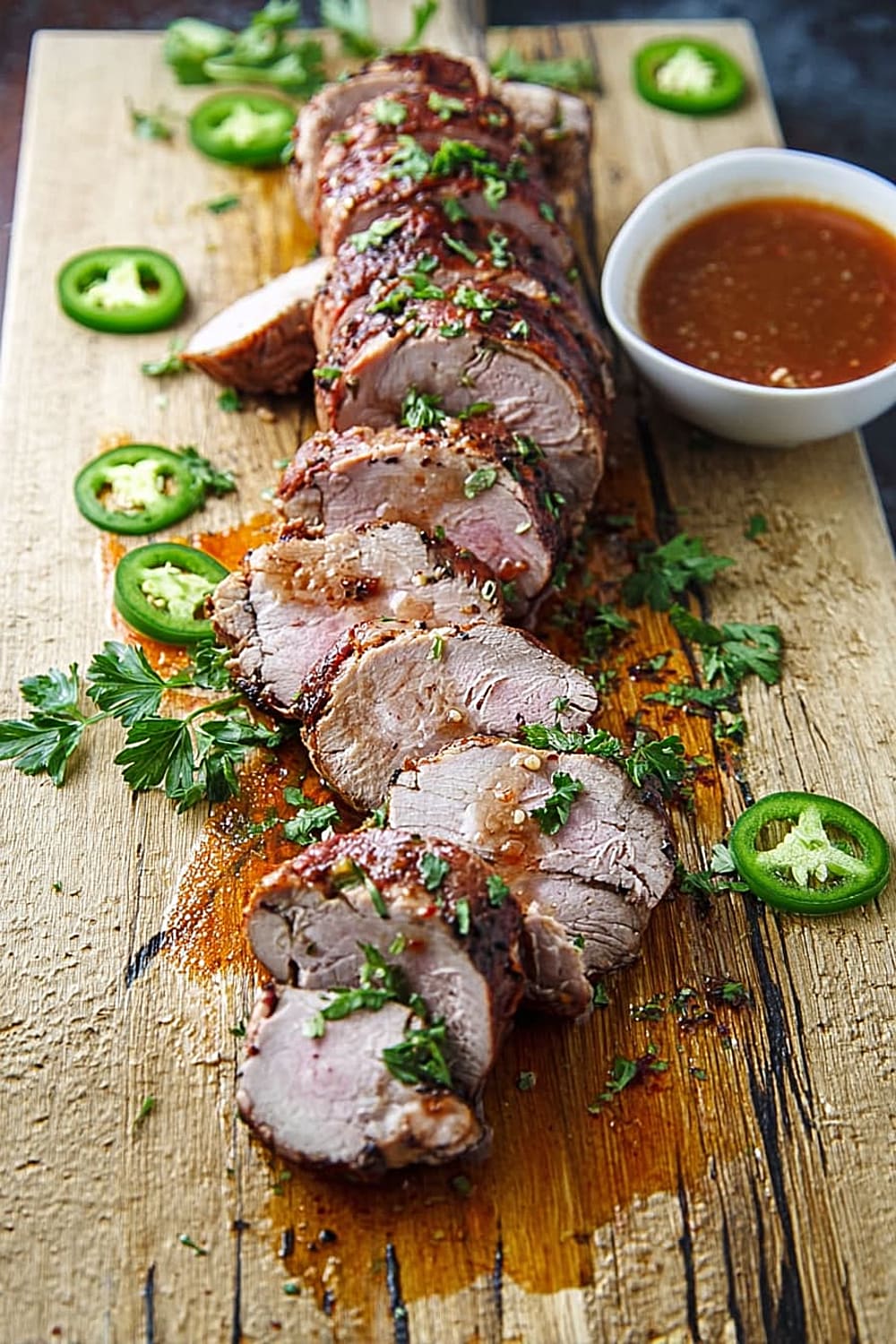
What makes this recipe absolutely brilliant is how the Dijon mustard and fresh lemon zest brighten everything up while the garlic and rosemary add that irresistible savory depth.
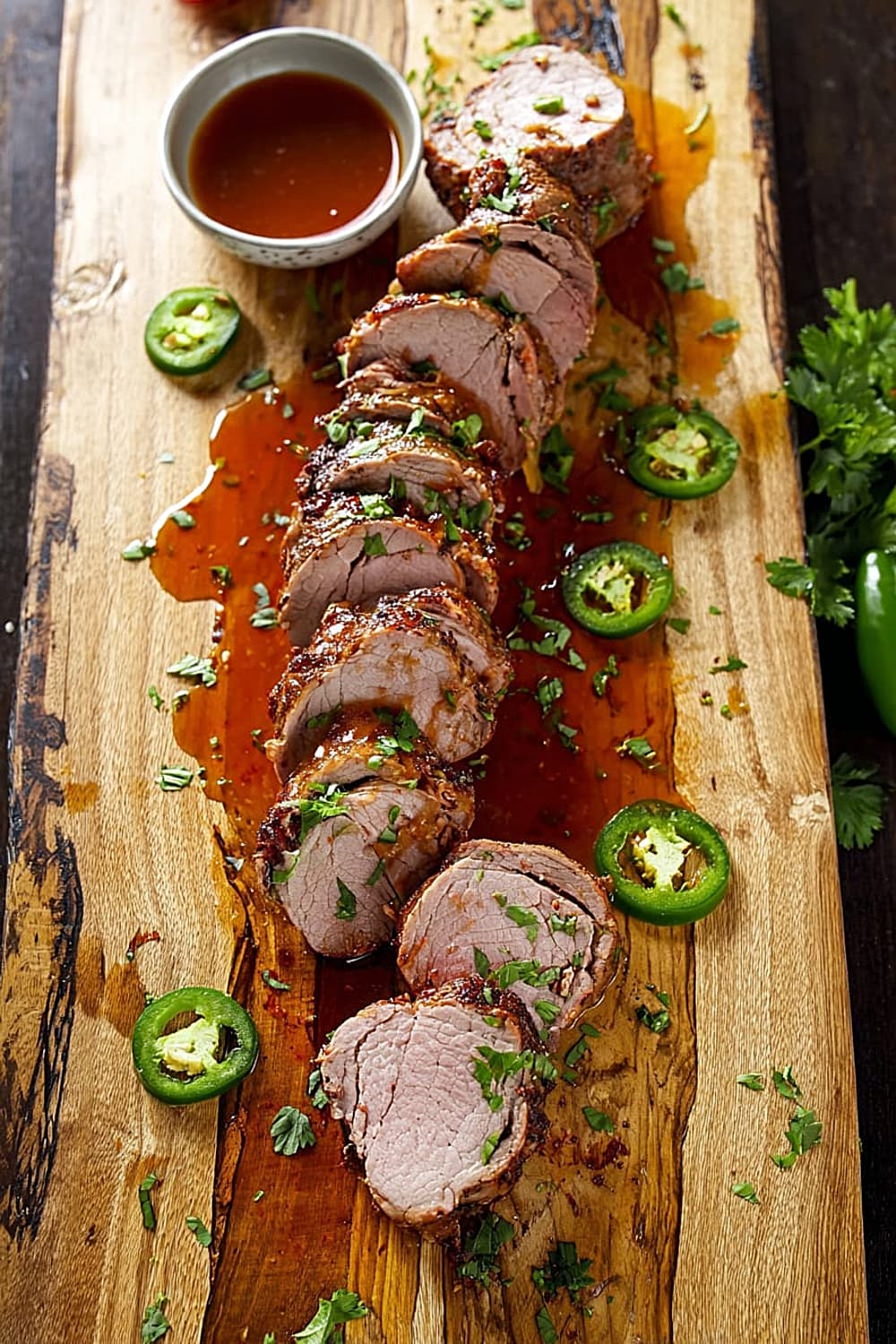
Fair warning: once you smell this marinating in your fridge, you’ll be counting down the hours until dinner time like a kid waiting for Christmas morning.

The best part is how incredibly versatile this marinade is – whether you’re grilling, roasting, or pan-searing, you’re guaranteed restaurant-quality results every single time.
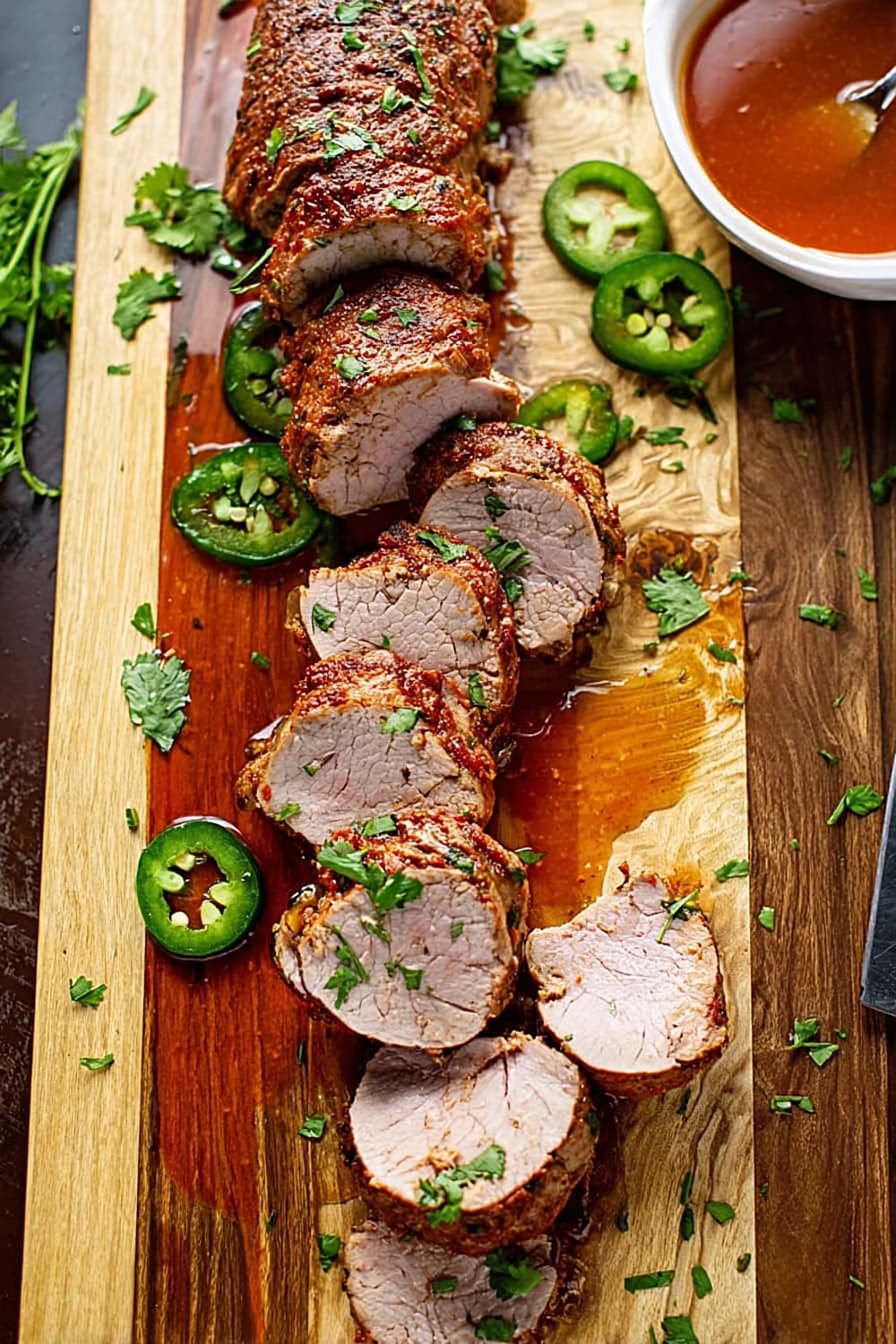
Ingredients
For the Marinade
- 1 /4 cup extra virgin olive oil
- 1 /4 cup low-sodium soy sauce
- 4-5 cloves fresh garlic, minced
- 3 tablespoons raw honey or brown sugar
- 2 tablespoons Louisiana-style hot sauce (Crystal or Tabasco)
- 1 tablespoon Dijon mustard
- 1 tablespoon fresh lemon juice plus zest
- 1 teaspoon red chili flakes
- 1 /2 teaspoon fresh chopped rosemary
- 1 /2 teaspoon sea salt
- 1 /2 teaspoon freshly ground black pepper
For Cooking
- 2 pounds pork tenderloin, trimmed
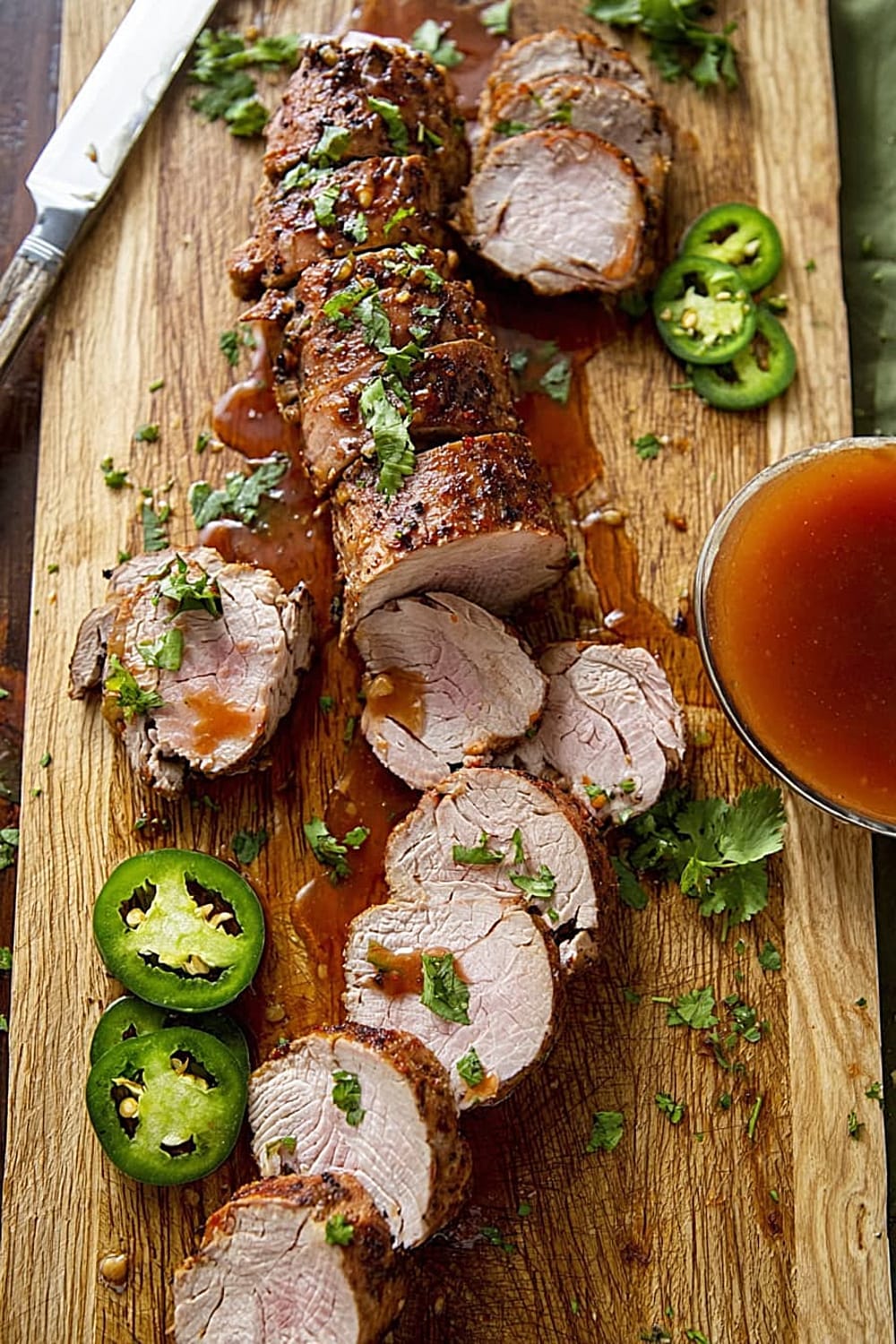
Instructions
Prepare the Marinade
- 1 In a large mixing bowl, whisk together the olive oil, soy sauce, minced garlic, and honey until the honey is completely dissolved and the mixture is smooth.
- 2 Add the hot sauce, Dijon mustard, lemon juice and zest, stirring vigorously with a whisk to create a well-emulsified marinade.
- 3 Sprinkle in the chili flakes, fresh rosemary, salt, and pepper, whisking until all ingredients are thoroughly combined and aromatic.
Marinate the Pork
- 4 Place the pork tenderloin in the bowl with the marinade, turning to coat all sides completely, or transfer everything to a large resealable plastic bag for easier handling.
- 5 Ensure the pork is fully submerged in the marinade, massaging gently to work the flavors into the meat surface.
- 6 Refrigerate for a minimum of 2 hours, though 24 hours provides optimal flavor penetration and tenderness.
Final Preparation
- 7 When ready to cook, remove the pork tenderloin from the marinade and discard the used marinade for food safety.
- 8 Allow the pork to come to room temperature for 15-20 minutes before cooking, which ensures even cooking throughout.
- 9 Cook using your preferred method – grilling, roasting at 425°F (220°C), or pan-searing until internal temperature reaches 145°F (63°C).

Recommended Equipment and Kitchen Tools
Essential Tools (for best results):
- Large mixing bowl – A wide, deep bowl makes whisking the marinade effortless and prevents splashing
- Wire whisk – Creates the perfect emulsion and ensures honey dissolves completely
- Microplane grater – Gets the finest lemon zest for maximum citrus oil release
- Instant-read thermometer – Takes the guesswork out of achieving perfectly cooked pork every time
Helpful Upgrades:
- Cast iron skillet – Provides superior heat retention and creates beautiful caramelization on the pork surface
- Digital kitchen scale – Ensures precise measurements for consistent marinade results
- Silicone-tipped tongs – Won’t scratch your cookware while providing secure grip for turning the pork
- Resealable bags – Makes marinating mess-free and allows for easy massage of marinade into meat
Nice-to-Have Options:
- Meat mallet – Gently pound thicker sections for even cooking throughout
- Aluminum foil – Perfect for creating a resting tent that keeps pork warm while juices redistribute
- Cutting board with juice groove – Prevents precious juices from escaping during slicing
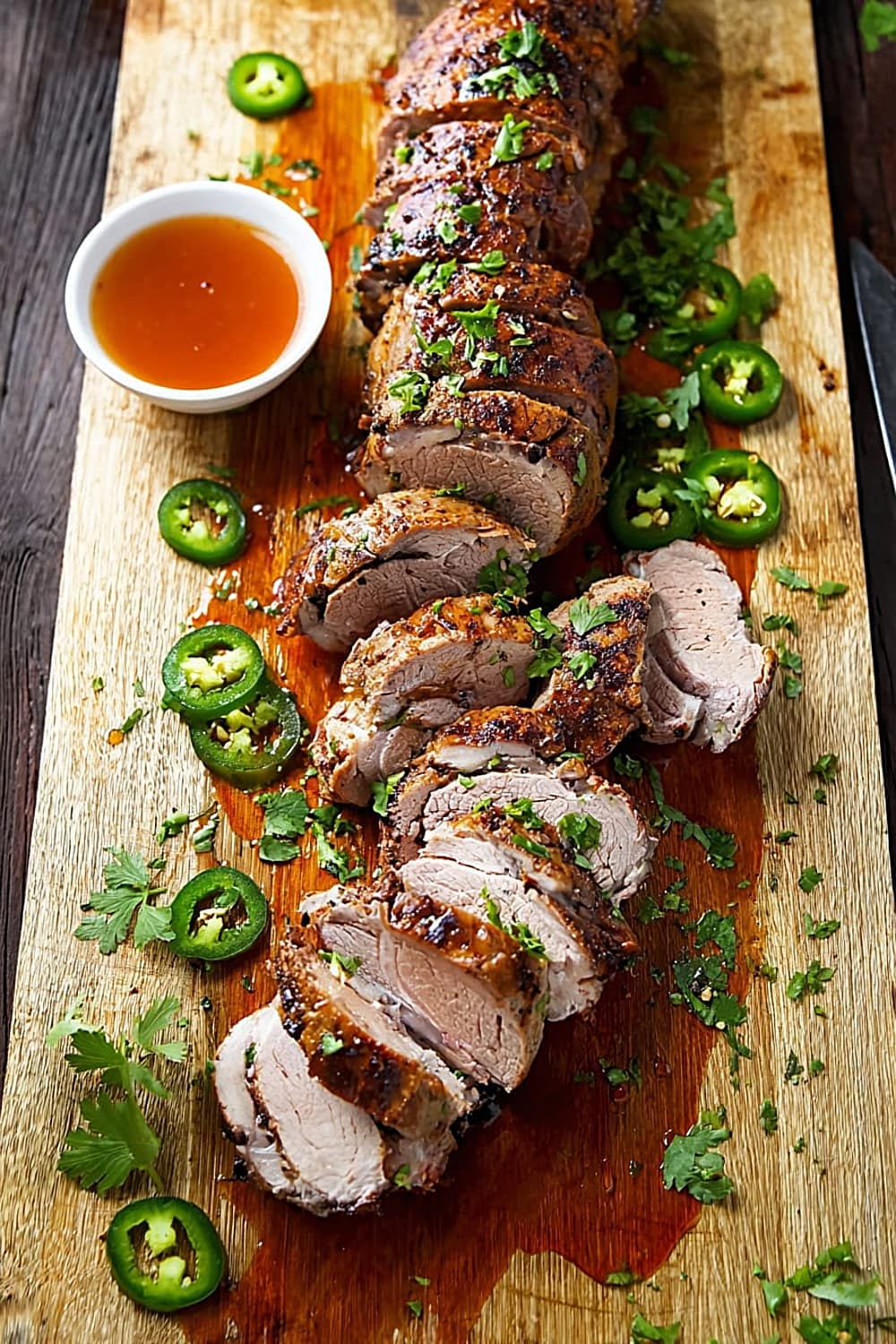
Recipe Variations and Dietary Modifications
Gluten-Free Adaptation:
- Replace soy sauce with tamari or coconut aminos using the same measurements
- Verify your hot sauce is gluten-free (most Louisiana-style sauces are naturally gluten-free)
- Use gluten-free Dijon mustard to be completely safe
Lower Sodium Version:
- Use low-sodium soy sauce or reduce to 2 tablespoons regular soy sauce
- Increase lemon juice to 2 tablespoons to maintain the tangy balance
- Add 1 teaspoon rice vinegar for extra acidity without sodium
Heat Level Variations:
- Mild version: Use 1 tablespoon hot sauce and 1/2 teaspoon chili flakes
- Extra spicy: Add 1 teaspoon cayenne pepper and increase hot sauce to 3 tablespoons
- Sweet heat: Include 1 tablespoon maple syrup along with the honey
Herb Alternatives:
- Replace rosemary with fresh thyme or oregano for Mediterranean flavors
- Try fresh sage for an earthy, fall-inspired variation
- Use Chinese five-spice instead of individual herbs for Asian fusion twist
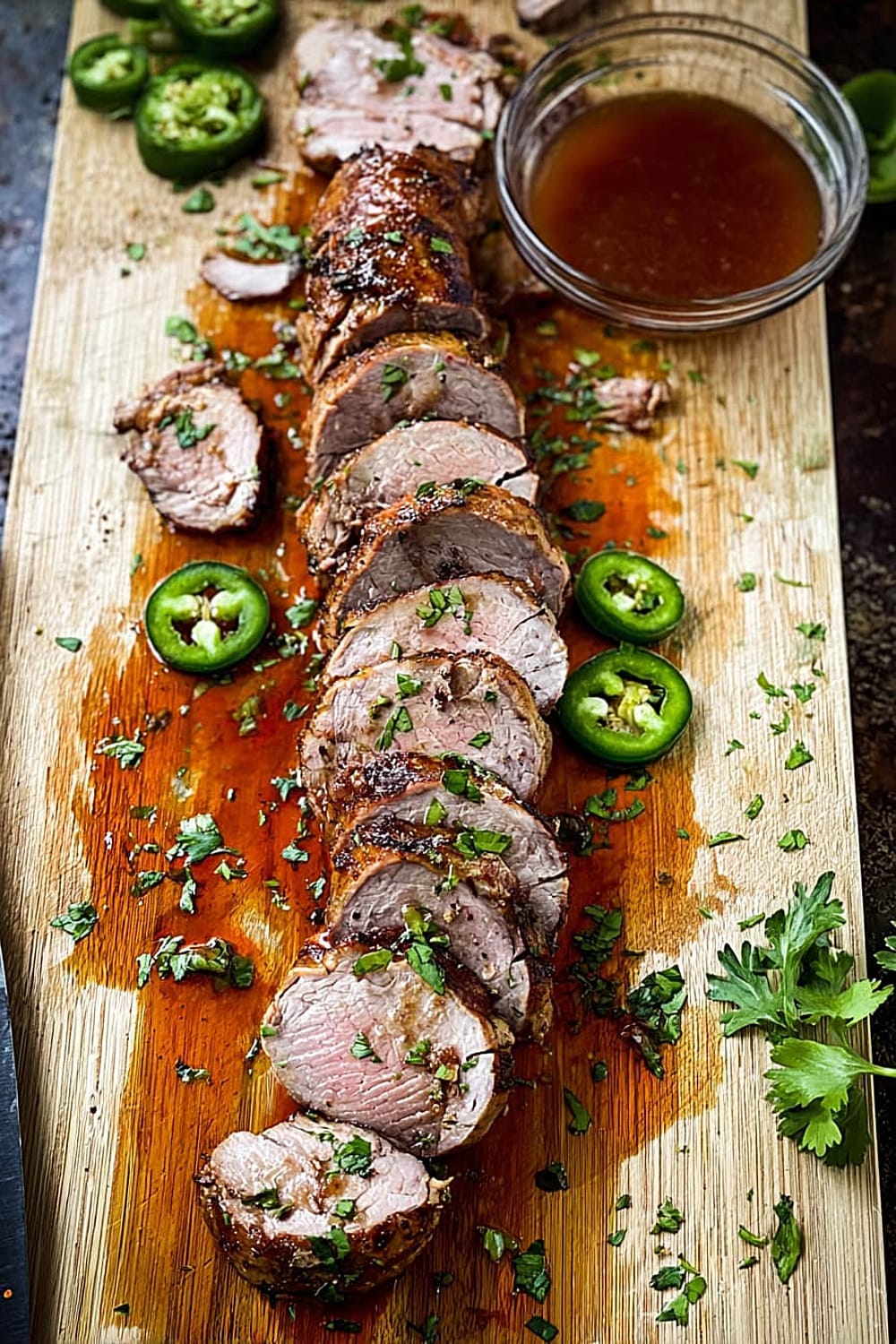
Nutritional Information and Health Benefits
Key Nutritional Highlights:
This marinated pork loin delivers approximately 305 calories per serving with an excellent protein-to-fat ratio. Each serving provides roughly 45 grams of high-quality complete protein, 8 grams of healthy fats from olive oil, and 12 grams of carbohydrates primarily from the honey and aromatics. The lean pork tenderloin is naturally low in saturated fat while being rich in essential amino acids.
Health Benefits of Main Ingredients:
The garlic provides allicin compounds with anti-inflammatory properties and cardiovascular benefits. Fresh rosemary contains powerful antioxidants including rosmarinic acid, which supports brain health and memory function. Extra virgin olive oil delivers heart-healthy monounsaturated fats and vitamin E. The lemon zest contributes vitamin C and citrus bioflavonoids that enhance iron absorption from the pork.
Dietary Considerations:
This recipe is naturally gluten-free when using tamari instead of soy sauce, and fits well into paleo and whole30 eating patterns with minor modifications. The lean pork provides selenium, phosphorus, and B-vitamins essential for energy metabolism. Each serving contains approximately 2 grams of fiber from the herbs and spices.
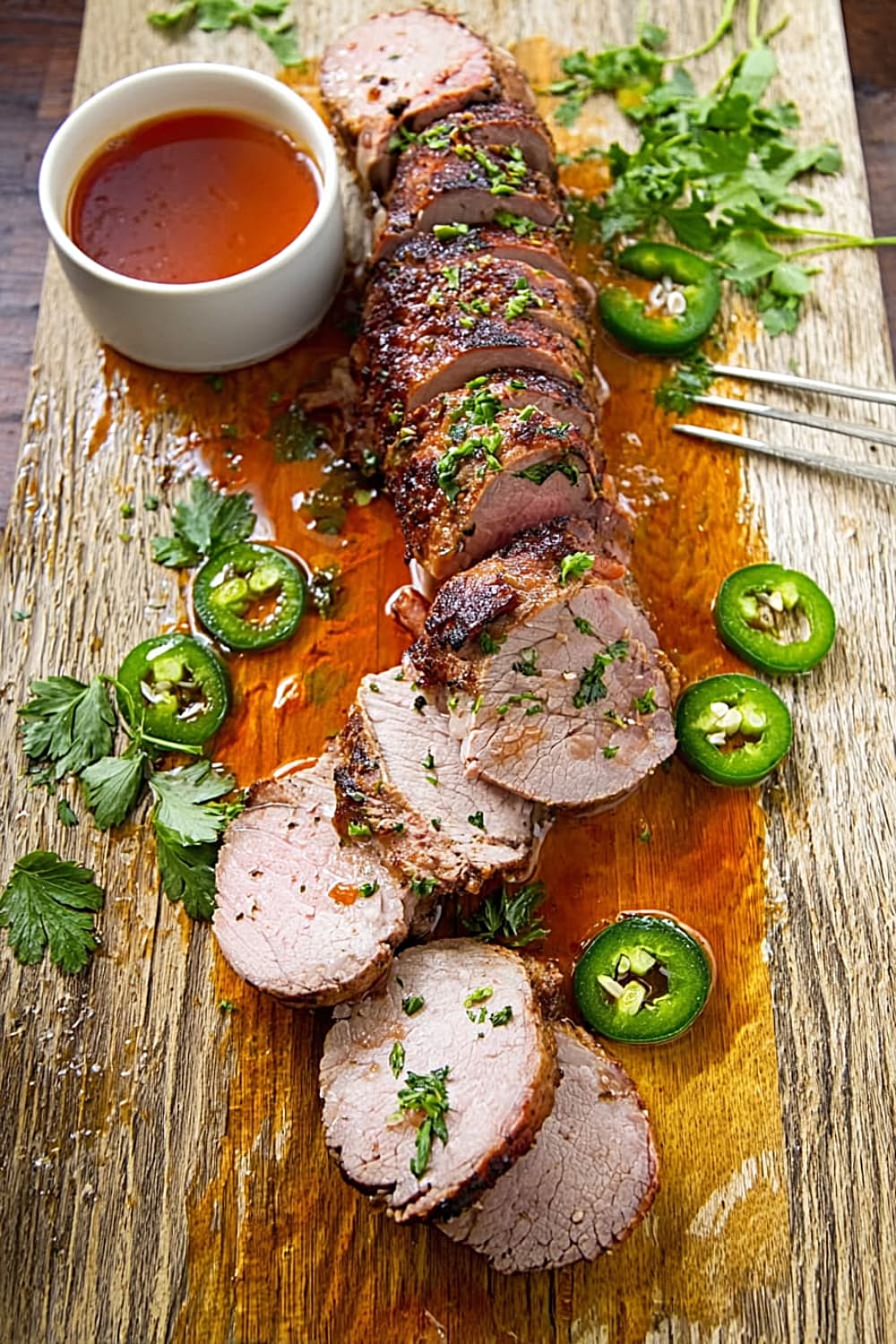
Smart Swaps and Ingredient Substitutions
Common Substitutions:
- Honey → Maple syrup or brown sugar (same measurements, slightly different flavor profiles)
- Soy sauce → Worcestershire sauce mixed with salt for umami depth
- Dijon mustard → Whole grain mustard or yellow mustard (reduce by half for yellow mustard)
- Fresh rosemary → Dried rosemary using 1/4 teaspoon instead
Budget-Friendly Swaps:
- Extra virgin olive oil → Avocado oil or vegetable oil for similar results
- Fresh garlic → Garlic powder using 1 teaspoon instead of fresh cloves
- Fresh lemon → Bottled lemon juice (though fresh provides better flavor)
Pantry Emergency Substitutions:
- Hot sauce → Red pepper flakes mixed with vinegar and pinch of sugar
- Chili flakes → Paprika plus cayenne pepper to taste
- Pork tenderloin → Chicken thighs or beef sirloin (adjust cooking times accordingly)
Pro Tips for Substitutions:
- When using dried herbs instead of fresh, add them 30 minutes into marinating for better flavor release
- Taste and adjust seasoning when making substitutions, as flavor intensities vary
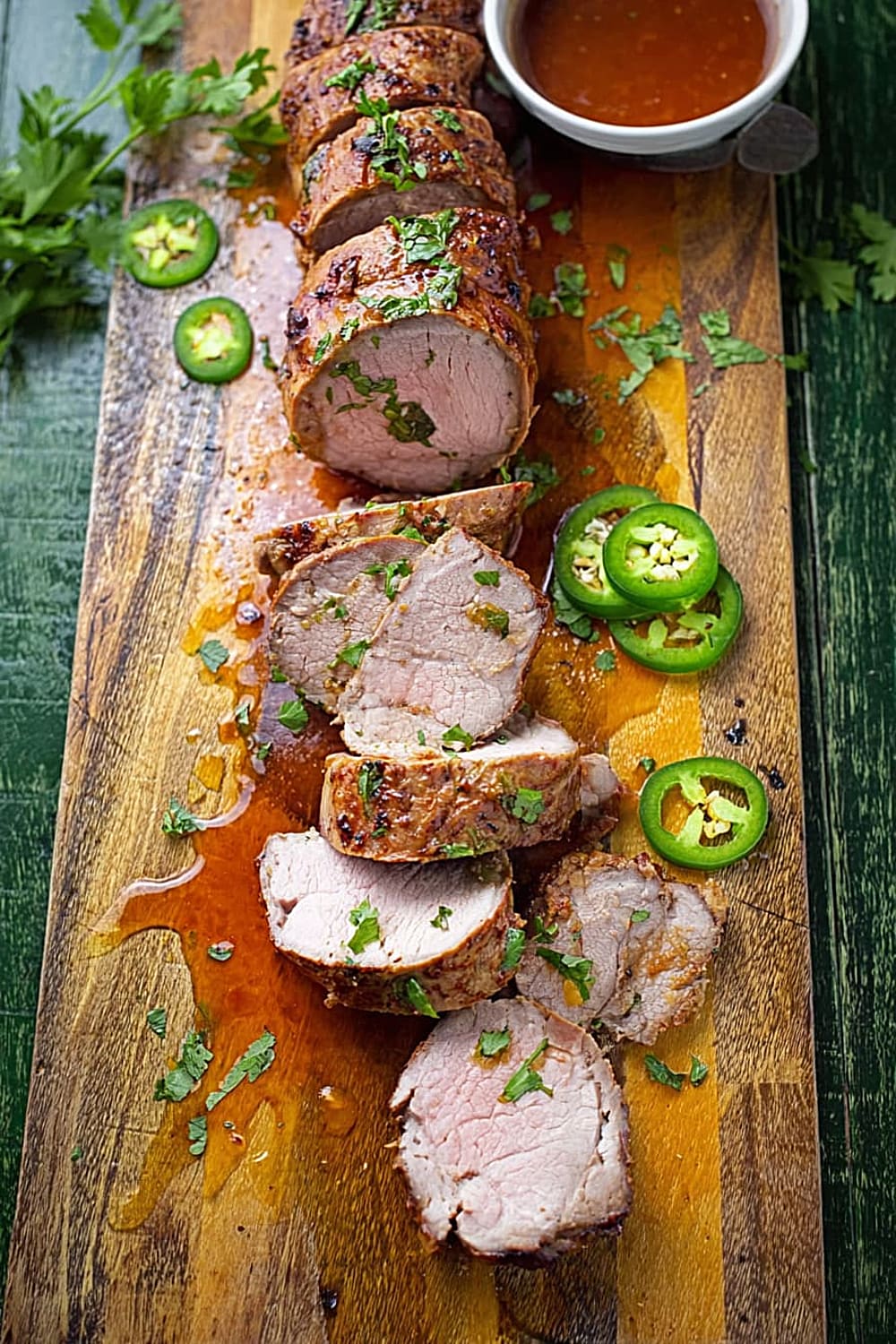
Make It Diabetes-Friendly
Sugar Substitutions:
- Replace 3 tablespoons honey with 2 tablespoons sugar-free maple syrup or 1 tablespoon stevia blend
- Use monk fruit sweetener at 1 tablespoon for equivalent sweetness without blood sugar impact
- Erythritol works well at 2 tablespoons and provides similar caramelization properties
Carb Reduction Strategies:
- Eliminate honey entirely and increase Dijon mustard to 2 tablespoons for tangy depth
- Add 1 tablespoon apple cider vinegar to replace some sweetness with acidity
- Double the garlic and herbs to boost flavor without adding carbohydrates
Portion & Timing Tips:
- Stick to 4-5 ounce servings of cooked pork for optimal blood sugar management
- Total carbs per serving: Reduced from 12g to approximately 3-4g with sugar substitutions
- Pair with non-starchy vegetables and healthy fats like avocado or nuts
Blood Sugar Benefits:
- High protein content helps stabilize blood glucose levels
- Healthy fats from olive oil slow digestion and prevent glucose spikes

Perfect Pairing Suggestions
Beverage Pairings:
A medium-bodied red wine like Pinot Noir complements the pork’s richness while balancing the marinade’s heat and sweetness. For beer lovers, an amber ale or wheat beer provides refreshing contrast to the spiced flavors. Sparkling water with fresh lime offers a palate-cleansing non-alcoholic option, while iced green tea echoes the Asian-inspired soy sauce elements.
Side Dish Recommendations:
Roasted Brussels sprouts with bacon provide earthy contrast to the sweet-spicy pork, while garlic mashed cauliflower offers creamy comfort without heavy carbs. Grilled asparagus with lemon brightens the plate and complements the citrus notes in the marinade. Wild rice pilaf with cranberries and almonds adds textural interest and subtle sweetness that harmonizes with the honey.
Complete Meal Ideas:
Start with mixed greens salad dressed in balsamic vinaigrette to prepare palates for the bold flavors ahead. Follow the pork with roasted rainbow carrots and quinoa stuffing for a colorful, nutritious spread. Apple crisp makes an ideal dessert, as the fruit’s sweetness complements the pork’s savory-sweet profile.
Occasion Suggestions:
This elegant yet approachable dish shines at dinner parties and holiday gatherings where you want to impress without stress. Perfect for Sunday family dinners or meal prep for busy weeknights.
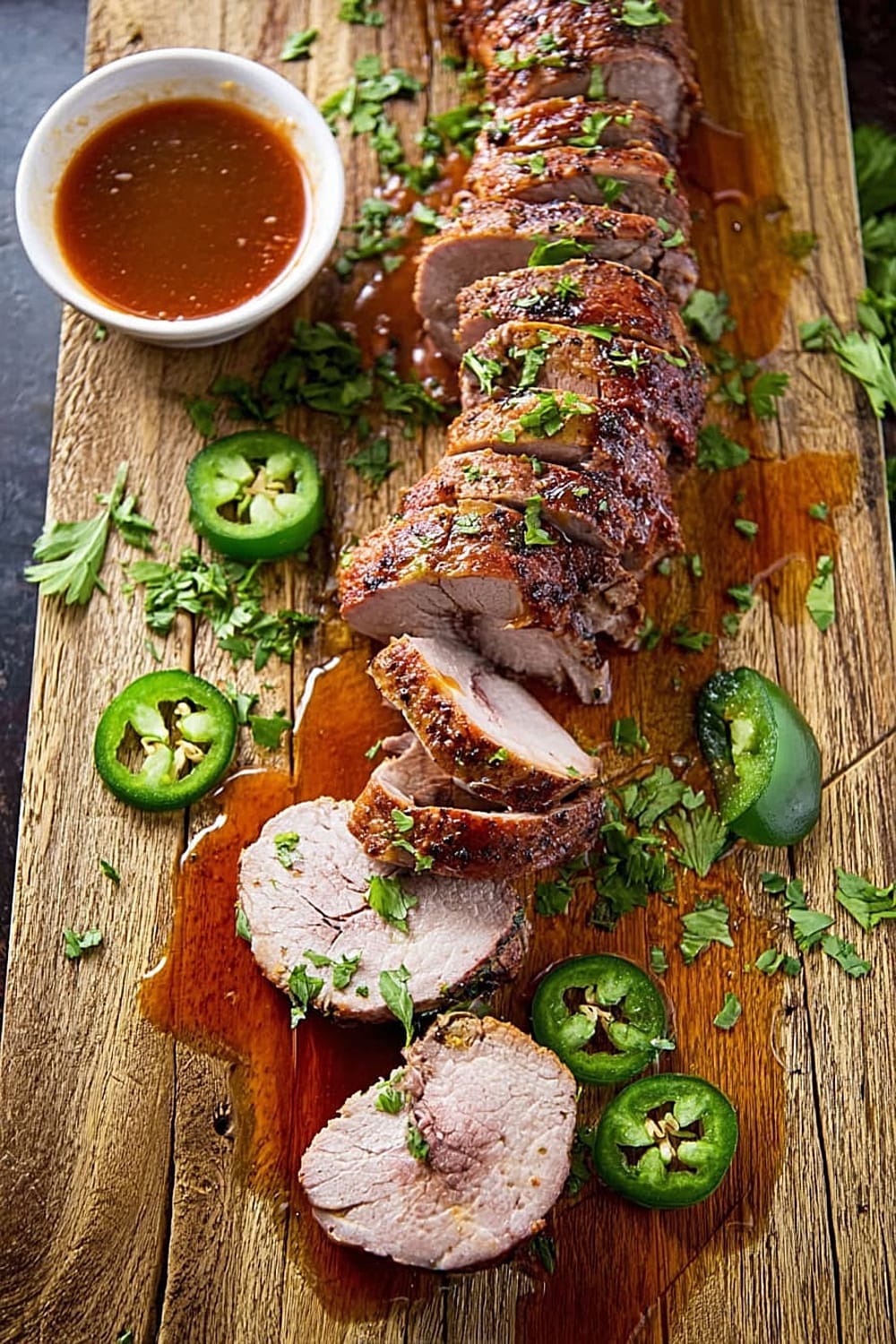
Pro Tips and Troubleshooting
Professional Techniques:
Always score the fat cap lightly in a crosshatch pattern if present – this allows marinade penetration and prevents curling during cooking. Double-bag when marinating in plastic bags to prevent leaks, and massage the marinade every few hours for even distribution. Sear first when roasting to lock in juices and create beautiful caramelization.
Common Mistake Prevention:
Never reuse marinade that’s touched raw pork – always discard for food safety. Don’t skip the resting period after cooking; 10-15 minutes allows juices to redistribute for maximum tenderness. Avoid overcooking by removing pork at 140°F (60°C) – it will reach 145°F (63°C) during resting.
Storage and Make-Ahead:
Marinated pork keeps 3 days refrigerated or 3 months frozen. Cooked leftovers stay fresh 4 days and reheat beautifully in a 300°F (150°C) oven until warmed through. Slice cold pork for incredible sandwiches and salads.
Scaling Success:
This recipe doubles perfectly for larger crowds – just use a bigger container for marinating. When halving, maintain the same marinating time for optimal flavor development.

This marinated spiced pork loin transforms simple ingredients into something truly spectacular, proving that the best recipes often come from the perfect balance of sweet, savory, and spicy elements working in delicious harmony.